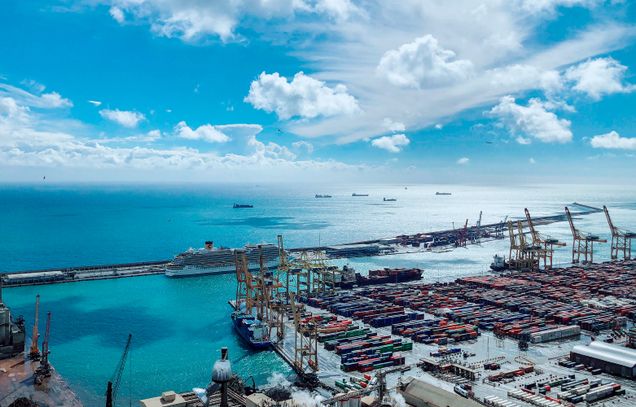Trading Away Industrialization? Contexts and Prospects of the EU-MERCOSUR Agreement

The EU-MERCOSUR free trade agreement (FTA) has yet to take effect, but would represent the largest trade deal for both blocs in terms of number of citizens involved. While previous studies have made projections for the FTA’s impacts, none of the past projections have taken adverse trends in employment, wage inequality and productivity growth among the blocs’ economies into account.
A new working paper from Jeronim Capaldo and Özlem Ömer at the Boston University Global Development Policy Center took this step and analyzed the contexts and prospects of the FTA in Argentina, Brazil, France, Germany, Italy, and other select countries. The authors concluded that the agreement is likely to be a step toward less productive, more unequal and more vulnerable economies in both regions.
Main findings:
- All countries in the study have recently experienced economic polarization and are more vulnerable to the risks of trade liberalization.
- Existing projections from other studies point to small GDP gains for these countries from the agreement, while polarization and other adverse outcomes are assumed away. Based on these projections, the agreement is likely to push most of the countries surveyed—especially in MERCOSUR, further away from sustainable growth and development.
- In France, Germany and Italy, the FTA is unlikely to reverse or break the vicious circle of growing inequality and deindustrialization.
- In Argentina and Brazil, the FTA is likely to intensify growing inequality and deindustrialization by accelerating the region’s industrial disadvantage relative to the EU.
- In Argentina and Brazil, the FTA will likely accelerate the expansion of stagnant sectors, such as agri-food and mining (also the sectors with some of the heaviest climate and environmental impacts), while leading to the relative contraction of the most dynamic sectors, including vehicle, transport machinery and electronic equipment.
- Without appropriate industrial and income policies, the FTA will likely lead to higher inequality in all participating countries hindering long-term economic recovery and sustainable development.
Country Findings and Toolkits
As part of this working paper, our team has created toolkits available for download for each of the five main countries surveyed: Argentina, Brazil, France, Germany and Italy. Each toolkit comes with a two-page summary of main findings and country-specific fast facts, social media messages and quote cards for sharing on social media. The toolkits are downloadable as PDFs and are available in English and the local language of the country. Click the photos to download the toolkits:
Argentina
- Output per capita and productivity grew around 3 percent and 1.7 percent per year respectively until 2012. After 2011, both slowed down sharply. Annual real GDP per capita grew around 0.9 percent, while productivity per employee was -0.16 percent on average between 2000 and 2018.
- The more stagnant sectors of the economy (where there is slow growth of productivity and wages) grew compared to more dynamic sectors. Most jobs were created in stagnant sectors, reversing key development dynamics.
- Manufacturing-related sectors were the main contributors to productivity growth, but saw their shares in value added and employment decrease, signaling premature deindustrialization in Argentina’s economy.
- The FTA will likely accelerate the expansion of stagnant sectors, such as agri-food and mining, while leading to the relative contraction and loss of competitiveness of the most dynamic sectors, including vehicle, transport machinery and electronic equipment.
- The FTA does not provide the necessary tools for technological transition to enable positive structural change, which will likely deepen negative trends.
- The expansion of agriculture and mining will have negative impacts on development and will likely increase pressure on carbon energy reserves and other natural resources.
- Unless the Argentine government gains policy space to resolve current structural problems, output and productivity growth will slow, inequality will increase and the income gap between the EU and Argentina will widen.
Brazil
- Between 2000-2014, growth rates of GDP per capita and labor productivity in Brazil were on a downward trend, averaging 2.9% and 1.8% per year respectively.
- In terms of employment, more stagnant than dynamic sectors of the economy expanded, such as public services, retail and wholesale. This reverses key development dynamics.
- Manufacturing featured low productivity and productivity growth.
- The declining role of the manufacturing sector combined with a thriving FIRE (Finance-Insurance and Real Estate) sector, points to a period of strong deindustrialization in Brazil, likely due to the rapid financialization and liberalization in trade.
- The EU-Mercosur FTA will likely accelerate the expansion of stagnant sectors such as agri-food and mining, while leading to the relative contraction and loss of competitiveness of the most dynamic sectors, including vehicle, transport machinery and electronic equipment.
- The expansion of agriculture and mining and the negative impacts on development will likely increase pressure on carbon energy reserves and other natural resources.
France
- Between 2000-2014, GDP per capita grew at 0.6% on average. Productivity per hour expanded at an average rate of 0.9 per year.
- The dynamic sectors generated an increasing share of value added and wage payments, but absorbed fewer workers. This pattern was less pronounced than in other countries, but still visible.
- Manufacturing remained the main source of productivity, but its share in employment was low and declined dramatically, while its share in value added remained stagnant at a low level (around 11%), indicating severe deindustrialization.
- The employment rate fell slightly as sustained productivity growth outweighed the slow expansion of demand. Most lost jobs were in dynamic sectors, such as manufacturing, warehousing and wholesale.
- Inequality declined because wage growth outstripped productivity growth with the help of redistributive policies that increased the bargaining power of workers.
- The FTA is unlikely to generate enough demand expansion to help France reverse its unsustainable structural imbalances (characterized by the shrinking of dynamic sectors, stagnating output and productivity and advanced deindustrialization).
Germany
- Between 2000-2014, growth rates of GDP per capita and labor productivity were on a downward trend, averaging 1.1% and 0.7% per year respectively.
- Almost all jobs were created in stagnant sectors (featuring slow growth of productivity and real wages), including in business services, education and health. The imbalance between stagnant and dynamic sectors grew severe compared to other countries.
- Dynamic sectors, such as manufacturing, information and wholesale, experienced fast productivity growth, but the stagnant sectors dominated the country average.
- Manufacturing’s share in employment declined, signaling deindustrialization.
- Inequality increased as productivity growth was faster than wage growth, especially in the relatively expanding stagnant sectors.
- The FTA is unlikely to generate enough demand expansion to help Germany reverse its unsustainable structural imbalance (characterized by the shrinking of dynamic sectors, feasible growth of output and productivity, and advanced deindustrialization). Re-distribution policies, investment policies and other policies for domestic demand expansion will be necessary.
Italy
- Between 2000-2014, GDP contracted at an average rate of 0.2% per year, reflecting deeper stagnation compared to other countries.
- Real wages stagnated, growing only 0.4% in 14 years, while productivity contracted 3.7%, allowing the labor share to increase.
- Income inequality declined mostly due to perverse structural change, which made the economy more labor intensive – not because of progressive income policy or strong labor market institutions.
- Manufacturing was the main contributor to productivity, but its share in employment declined dramatically and its share in value added remained stagnant at a low level (around 16%), indicating deindustrialization.
- All stagnant sectors, such as business services, retail, accommodation and food, caused most of the contraction in productivity, but were the only job creators.
- The FTA is unlikely to generate enough demand expansion to help Italy reverse its unsustainable structural imbalance (characterized by the shrinking of dynamic sectors, severe decline of output and productivity, and advanced deindustrialization). Re-distribution policies, investment policies and other policies for domestic demand expansion will be necessary.




